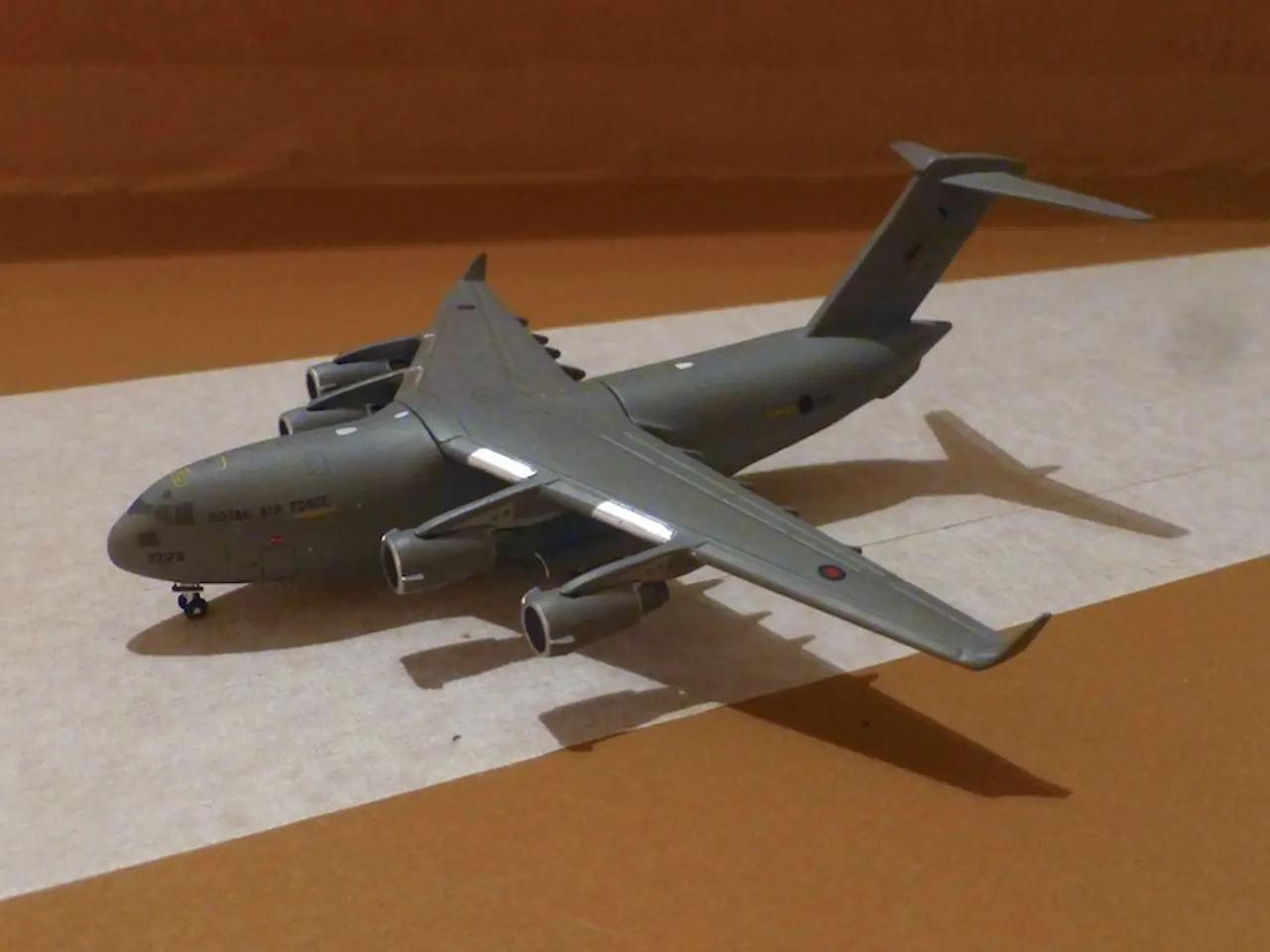Illuminating the Heavens: A Discussion on Sky Electrification
Airbus, a leading name in the aerospace industry, is making strides in the development of hybrid-electric aircraft by adopting a modular approach to hybridisation. This approach involves the use of sets of technology building blocks called modules, which aim to simplify the integration of various hybrid technologies into aircraft designs.
The Role of Li-Ion Batteries and Solid-State Batteries
Currently, Lithium-Ion (Li-Ion) batteries are being utilised for energy storage in hybrid-electric aircraft. While these batteries deliver significant performance gains compared to Nickel-Cadmium, their energy density is significantly lower compared to kerosene and hydrogen. The energy density of Li-Ion batteries reaches around 200 Watt-hours per kilogramme (Wh/kg).
However, the "holy-grail" for Airbus is the solid-state battery, which promises solutions to many Li-Ion drawbacks. Solid-state batteries mitigate the risk of thermal runaway (overheating), making it easier to design a safe battery system. Airbus is in discussions with a number of aerospace suppliers who provide electrical systems regarding solid-state batteries. Realistically, Airbus does not expect to see prototype solid-state batteries adapted for aerospace before 2030.
Serial and Parallel Hybrid Architectures
The advantages and challenges of parallel and serial hybrid architectures for hybrid-electric aircraft, and their impact on electrical power system development, are significant.
Serial Hybrid Architecture
The serial hybrid architecture offers several advantages. It decouples the internal combustion engine (or generator) from the propulsion system, adding flexibility in power management and placement of components. This architecture can efficiently power long-range or medium-haul flights by optimising generator load and battery usage.
However, it requires large and heavy energy storage units (batteries) to provide sufficient energy capacity, which impacts weight and aircraft design. A high power electrical distribution system is also needed to deliver megawatt-level power to multiple electric propulsors, demanding advanced electrical system design and thermal management.
Parallel Hybrid Architecture
The parallel hybrid architecture provides operational flexibility by allowing both the combustion engine and electric motor to provide thrust simultaneously or independently. This architecture allows for downsizing of the internal combustion engine because the electric motor can assist during high power demand phases.
However, it faces challenges in terms of complex mechanical integration and increased mechanical complexity, which might lead to more maintenance and potential reliability issues.
Impact on Electrical Power System Development
The design choice deeply influences electrical system architecture, size, complexity, and required component development. Serial hybrid demands high-capacity generators, power electronics, and bulky onboard energy storage systems along with robust high-voltage distribution networks. Parallel hybrid requires tightly integrated electromechanical control systems for power share management but may allow somewhat smaller electrical power components due to shared propulsion load.
Both architectures drive innovation in power electronics, energy storage technologies (batteries and supercapacitors), thermal management, and electrical safety standards tailored for aviation. System weight, reliability, cooling, and certification are critical development challenges stemming from these architectures.
Partnerships and Collaborations
Airbus is collaborating with other sectors to develop more powerful batteries for aircraft electrification. Recently, Airbus and Renault Group announced a partnership agreement to advance research into energy storage and management. Airbus is exploring technologies already deployed in the automotive sector, such as Li-Ion batteries.
In conclusion, the development of hybrid-electric aircraft is a complex endeavour, requiring careful consideration of various factors such as battery technology, hybrid architecture, and electrical power system design. Airbus's modular approach and collaborations with other industries aim to address these challenges and usher in a new era of sustainable aviation.
Read also:
- Hematology specialist and anemia treatment: The role of a hematologist in managing anemia conditions
- A Week in Pixelized Realm: The Transformation of the World in Digital Form
- Enhancing the framework or setup for efficient operation and growth
- Hydroelectric Power Generation Industry Forecasted to Expand to USD 413.3 Billion by 2034, Projected Growth Rate of 5.8% Compound Annual Growth Rate (CAGR)




